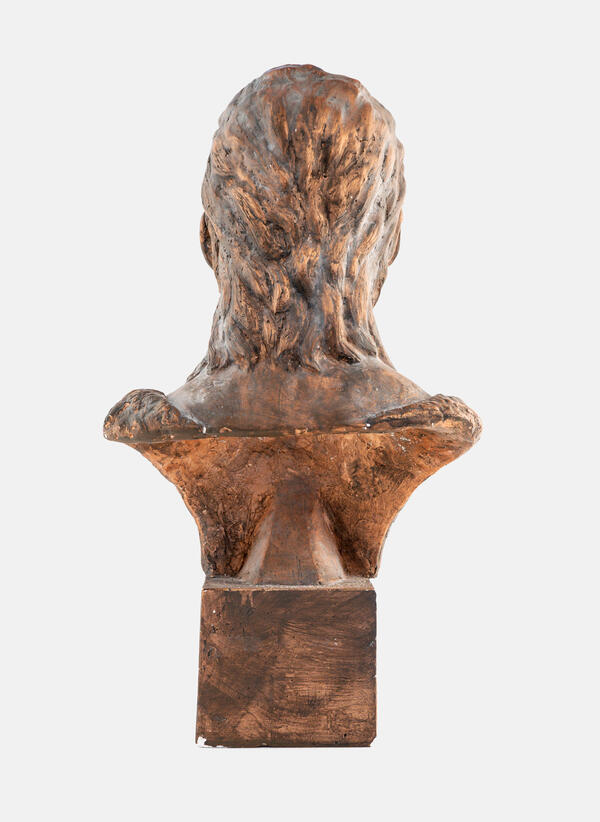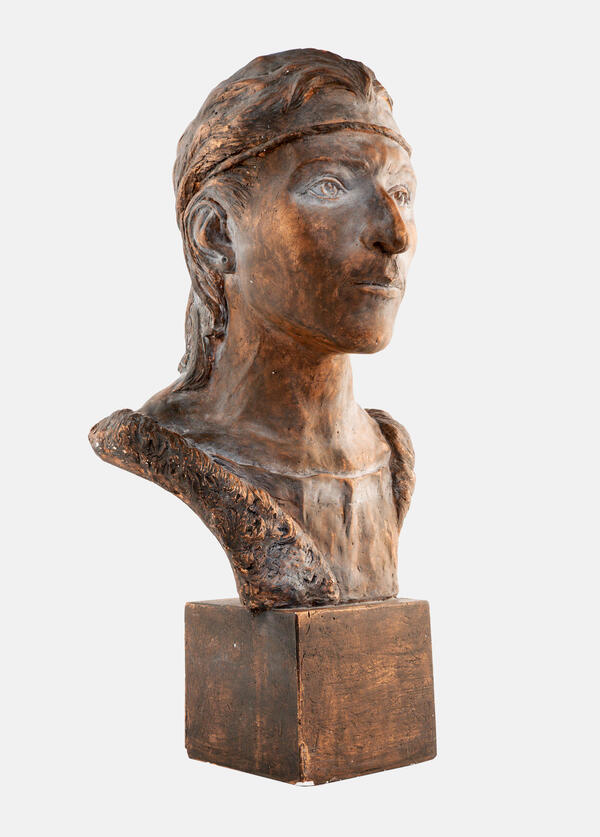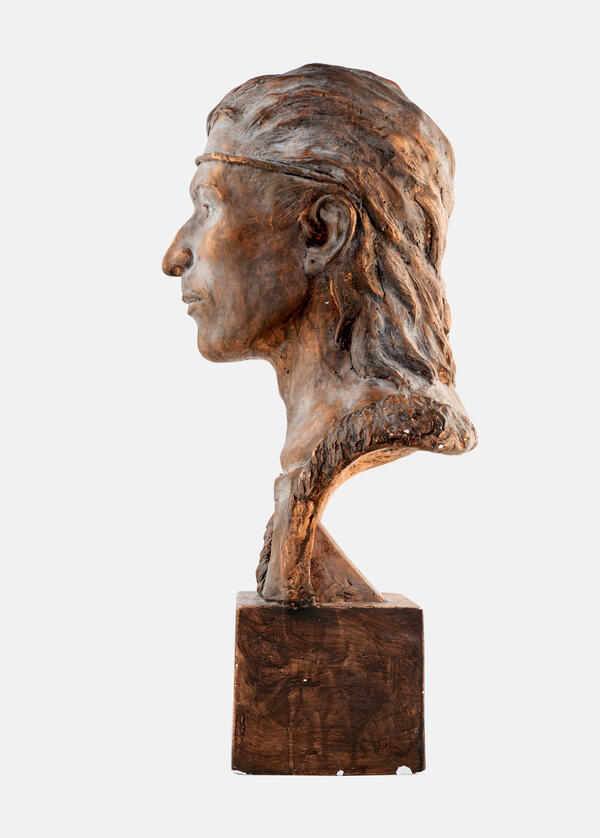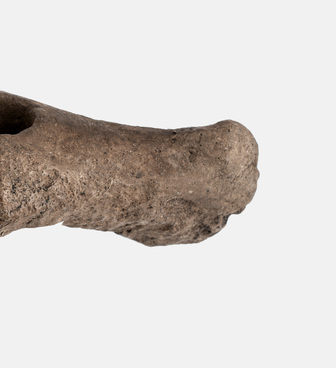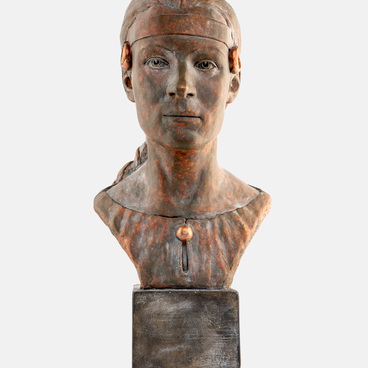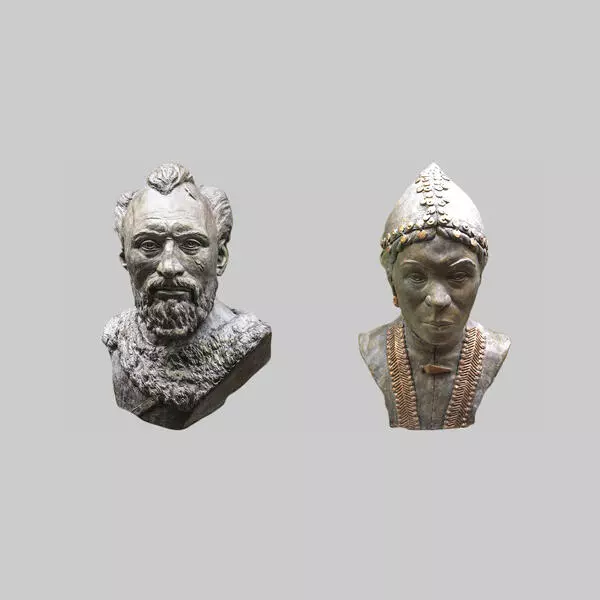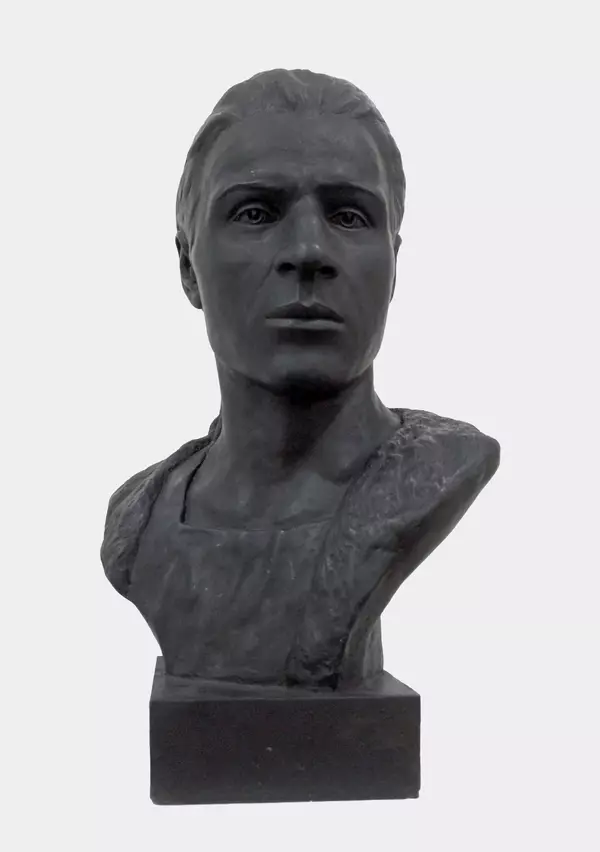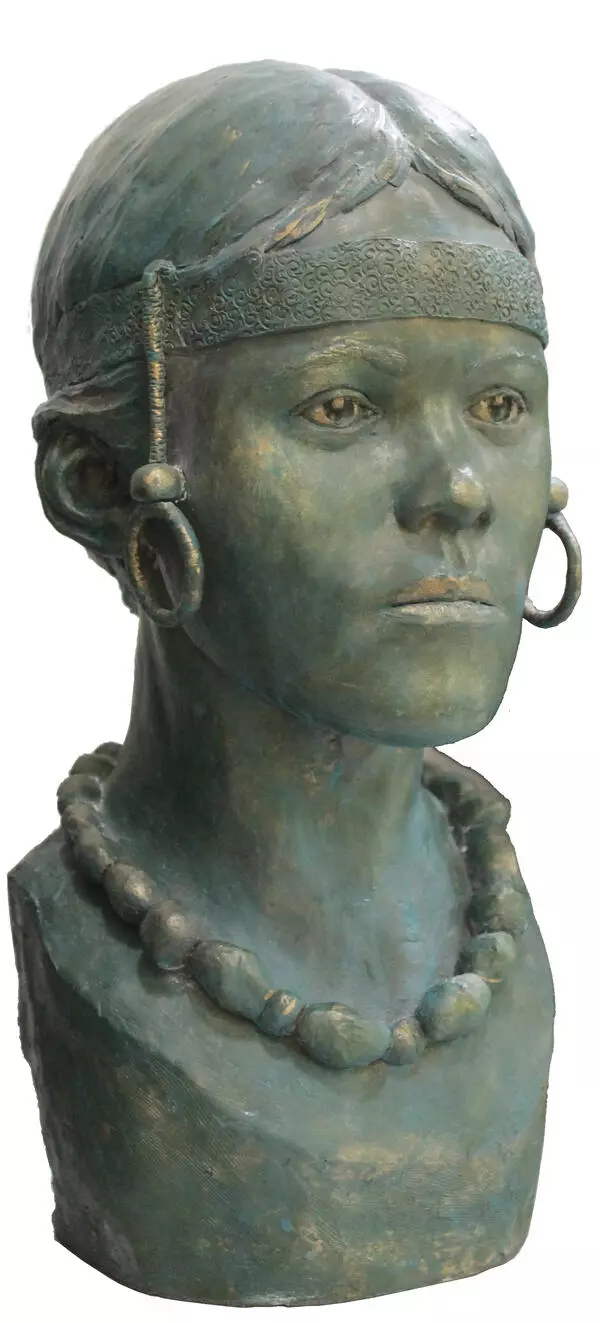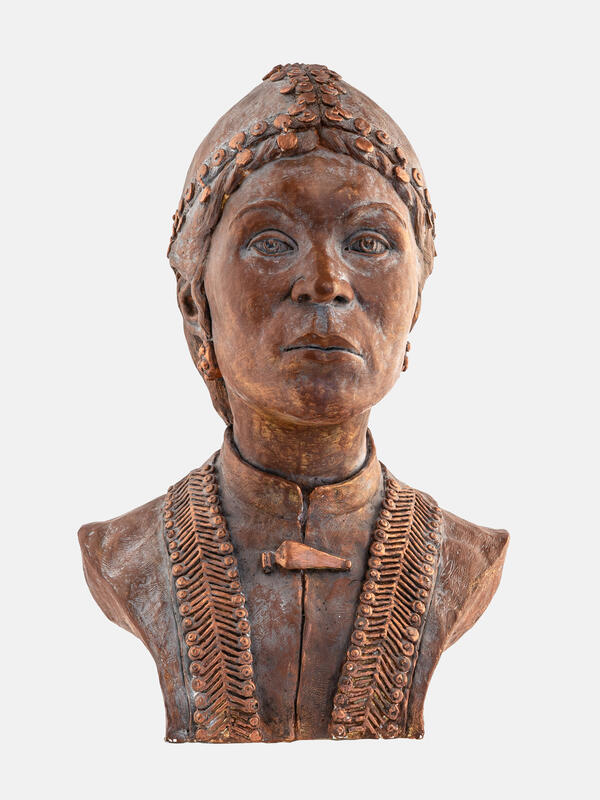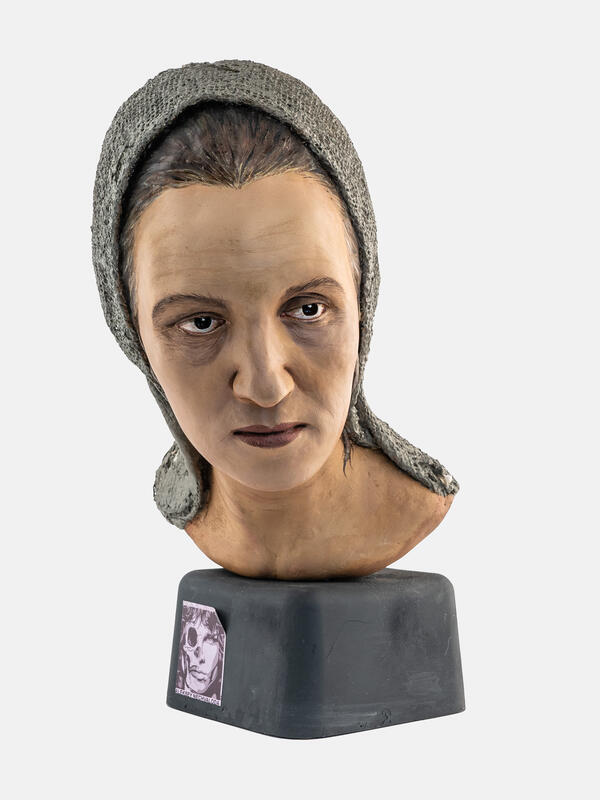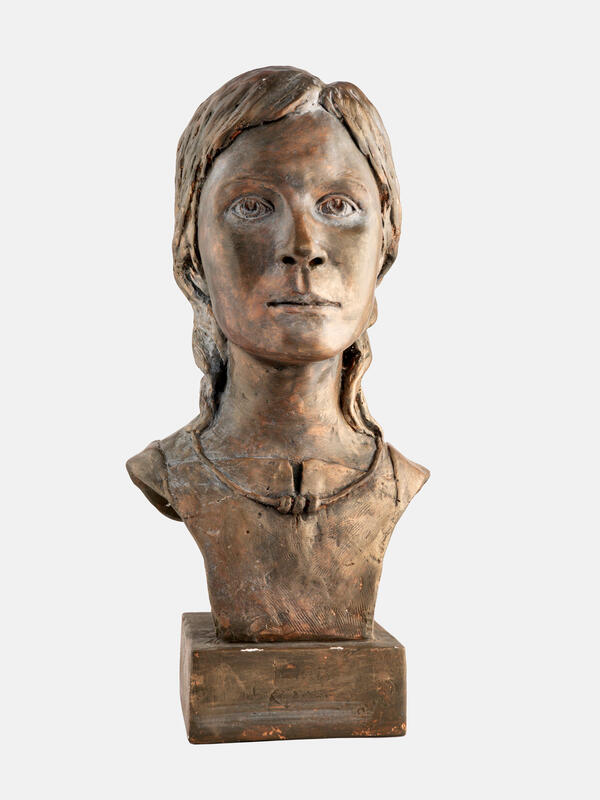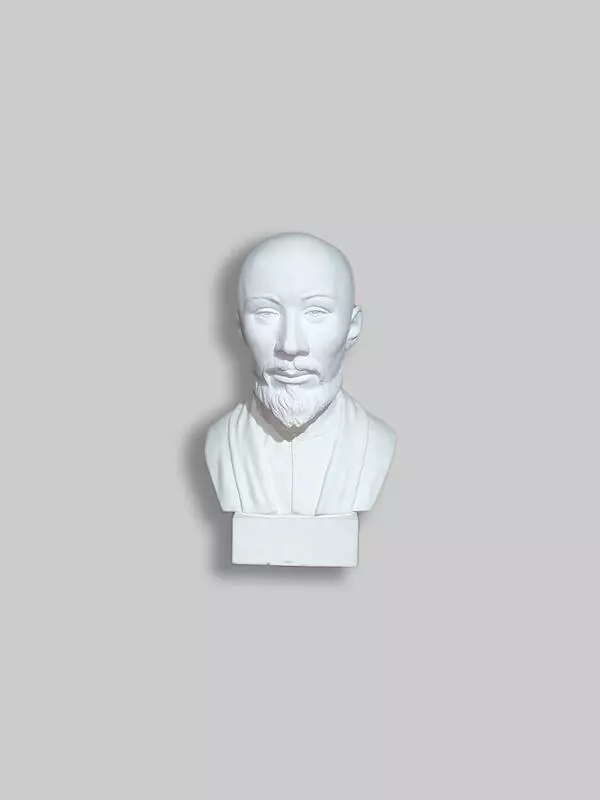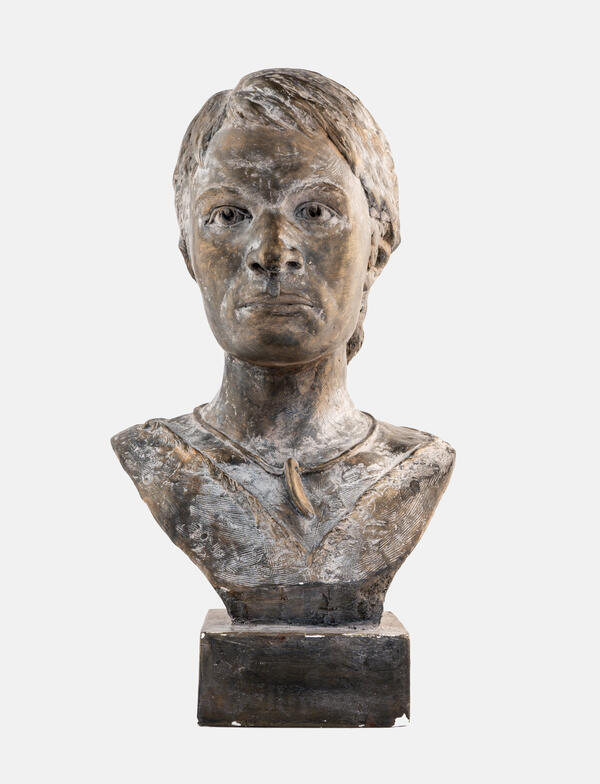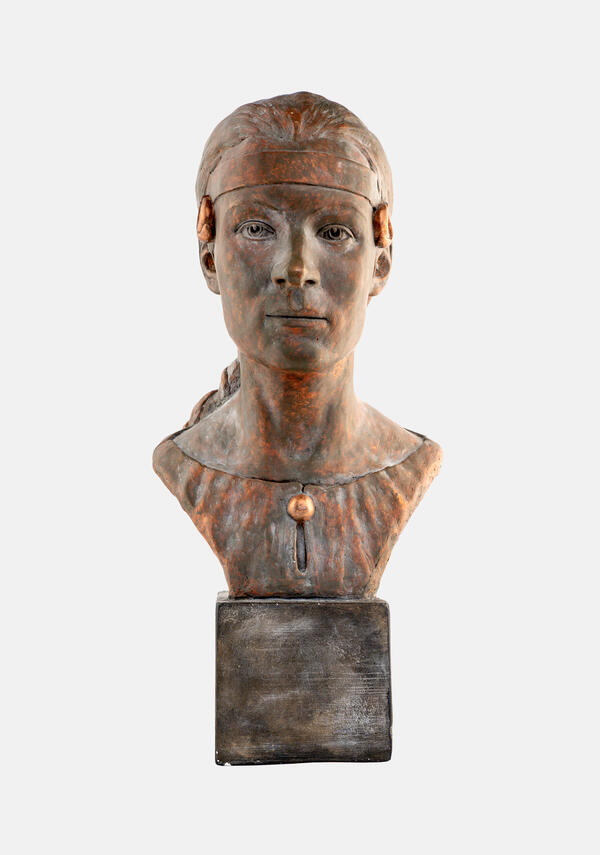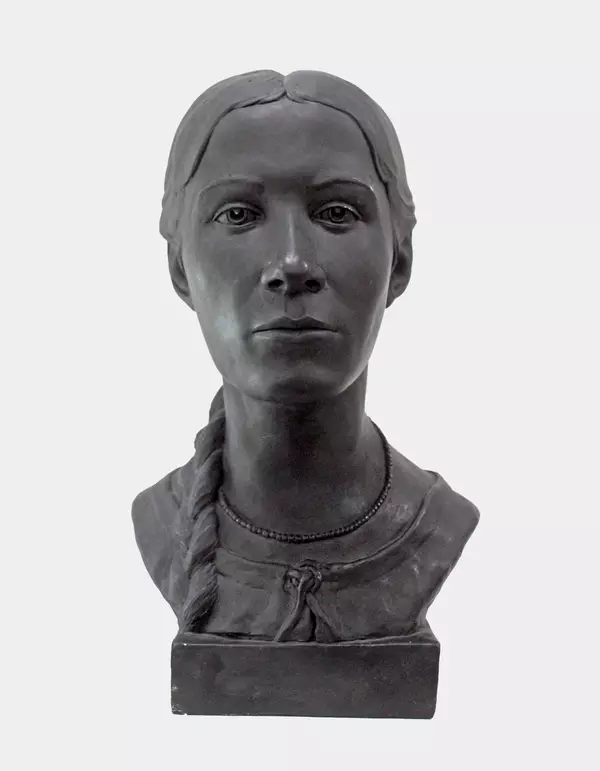The sculptural reconstruction of the face is based on the skull of a man, which was discovered in mound 25 of the Bolshekaragan burial ground in 1992. Dmitry Zdanovich led the research of the mound. The Bolshekaragan burial ground is located in the Kizilsky district of Chelyabinsk region, 3.5 kilometers east-northeast of the village of Aleksandrovskoye, on the left bank of the Bolshaya Karaganka River.
The ancient people of Arkaim and Sintashta culture mainly belonged to the Caucasoid anthropological type. However, in terms of appearance and origin they were not homogeneous, especially in the early stages, when this society was emerging. According to the results of one of the latest studies, where DNA samples of people from burial grounds of the Arkaim time were used, two thirds of the population of Arkaim and “The Land of Cities” descended from steppe herders who came from the regions of the Pre-Caucasus (Pit Grave cultural and historical community). One third was made up of the local Eneolithic population. The representatives of the population were notable for their good health for that time and were not subjected to excessive physical strain. They did not suffer from hunger, their food was soft and contained a lot of protein; there are traces of healed fractures on the bones, which indicates the presence of some level of medical knowledge.
The anthropologist Alexey Nechvaloda carried out a number of skull reconstructions of Bronze Age and Early Iron Age monuments for the exhibition and projects of the Arkaim Museum-Reserve.
The reconstruction of the physical appearance of people who lived in the distant past begins with the determination of age, sex and individual features of the person under study. The next stage is the restoration of the external appearance based on the skull. This technique, which continues to be perfected today, was developed by the famous anthropologist Mikhail Gerasimov. The work is completed by reproduction of hairstyle and clothes according to historical data. A mold, removed from the bust, is used to make plaster or plastic copies, and the skull that was used is returned to the repository.
